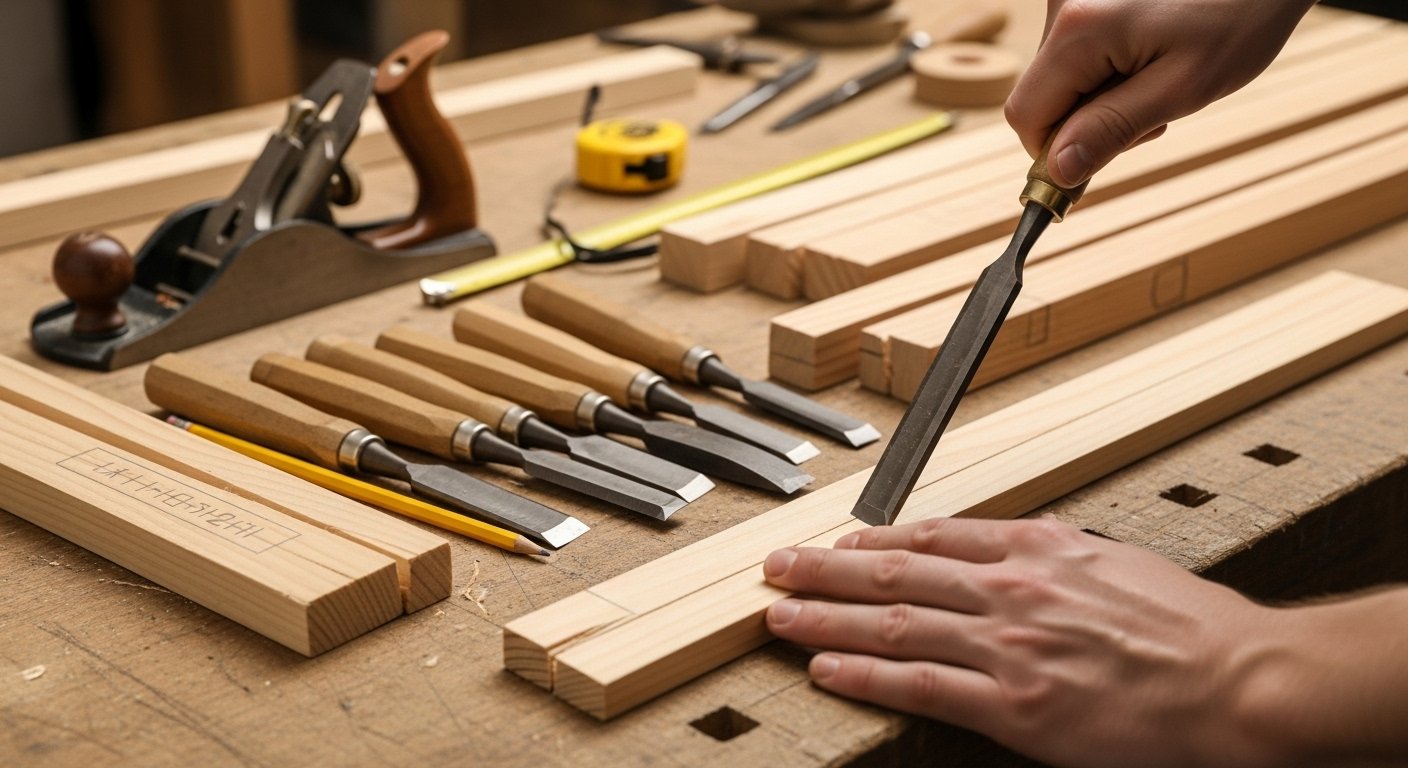Starting your woodworking journey is an exciting adventure, full of creative possibilities and the satisfaction of building with your own hands. However, it’s also a craft that demands precision, patience, and a healthy respect for your tools. Many new woodworkers, eager to dive in, often stumble over common beginner woodworking tool mistakes. These aren’t just minor hiccups; they can lead to frustration, wasted materials, poor project outcomes, and, most importantly, serious injuries. Understanding these pitfalls early on is crucial for developing good habits and ensuring a safe and enjoyable experience in the workshop.
To help you navigate the initial challenges, we’ve compiled a list of the 7 most frequent beginner woodworking tool mistakes to avoid. By being aware of these common woodworking errors, you can set yourself up for success and enjoy the rewarding process of bringing your wood projects to life:
1. Neglecting Safety Gear and Protocols
2. Using Dull Tools and Improper Tool Maintenance
3. Skipping Accurate Measuring and Marking
4. Ignoring Wood Grain and Improper Wood Selection
5. Rushing Projects and Lack of Planning
6. Buying the Wrong Tools (or Too Many Too Soon)
7. Neglecting Dust Collection and Workshop Environment
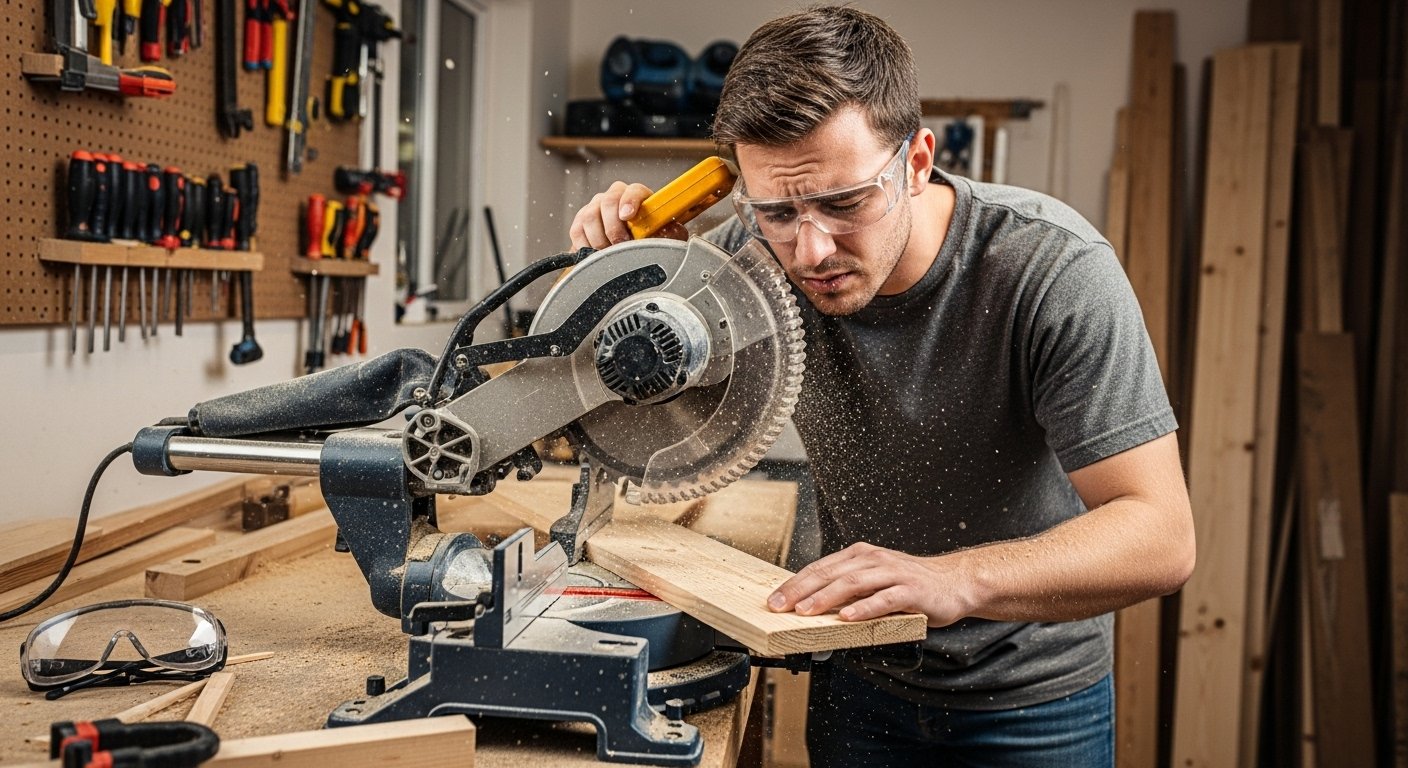
1. Neglecting Safety Gear and Protocols
What is the most common mistake in woodworking? Without a doubt, the most critical and often repeated beginner woodworking tool mistake is underestimating the importance of safety. Woodworking equipment produces approximately 720,000 injuries per year, with 60.5% occurring to amateur woodworkers. [16] This startling statistic highlights a fundamental truth: a moment of carelessness can have lasting consequences. Many aspiring woodworkers skip essential safety gear or overlook proper procedures, leading to preventable woodworking accidents.
Essential Safety Gear (PPE)
Always wear appropriate Safety Gear. This includes, but is not limited to:
- Eye Protection: Safety glasses or a face shield are non-negotiable. Flying wood chips, sawdust, or even broken tool bits can cause severe eye injuries. [3]
- Hearing Protection: Power tools like Table Saws, Routers, and planers generate significant noise that can lead to permanent hearing damage over time. Earmuffs or earplugs are vital. [3]
- Respiratory Protection: Wood dust is not just a nuisance; it’s a health hazard. Breathing fine wood particles can cause allergic reactions, respiratory issues, and even cancer. [2, 17, 19] A good quality dust mask or respirator is essential, especially when sanding or working with dust-producing machinery.
- Gloves (with caution): While gloves can protect your hands from splinters, they should *never* be worn when operating machinery with rotating blades or bits, such as a Table Saw or Router, as they can get caught and pull your hand into the machine. [3] Use them for handling rough lumber or applying finishes.
- Appropriate Clothing: Avoid loose clothing, dangling drawstrings, or jewelry that could get snagged by moving machine parts. Tie back long hair. [4]
Power Tool Safety Mistakes Woodworking Beginners Make
The Table Saw, while incredibly versatile, is responsible for the most woodworking injuries, with an estimated 39,750 injuries annually in the U.S. [13] Fingers and hands are the body parts most frequently injured. [16] Approximately 4,000 people suffer traumatic amputations every year due to table saw accidents. [16] Always use guards, push sticks, and follow proper techniques for every tool. Never force a cut or work with dull blades, as these increase the risk of kickback or slippage. Always disconnect power when making adjustments or changing blades. [4] For more comprehensive safety guidelines, consult resources from organizations like OSHA. [15, 3]
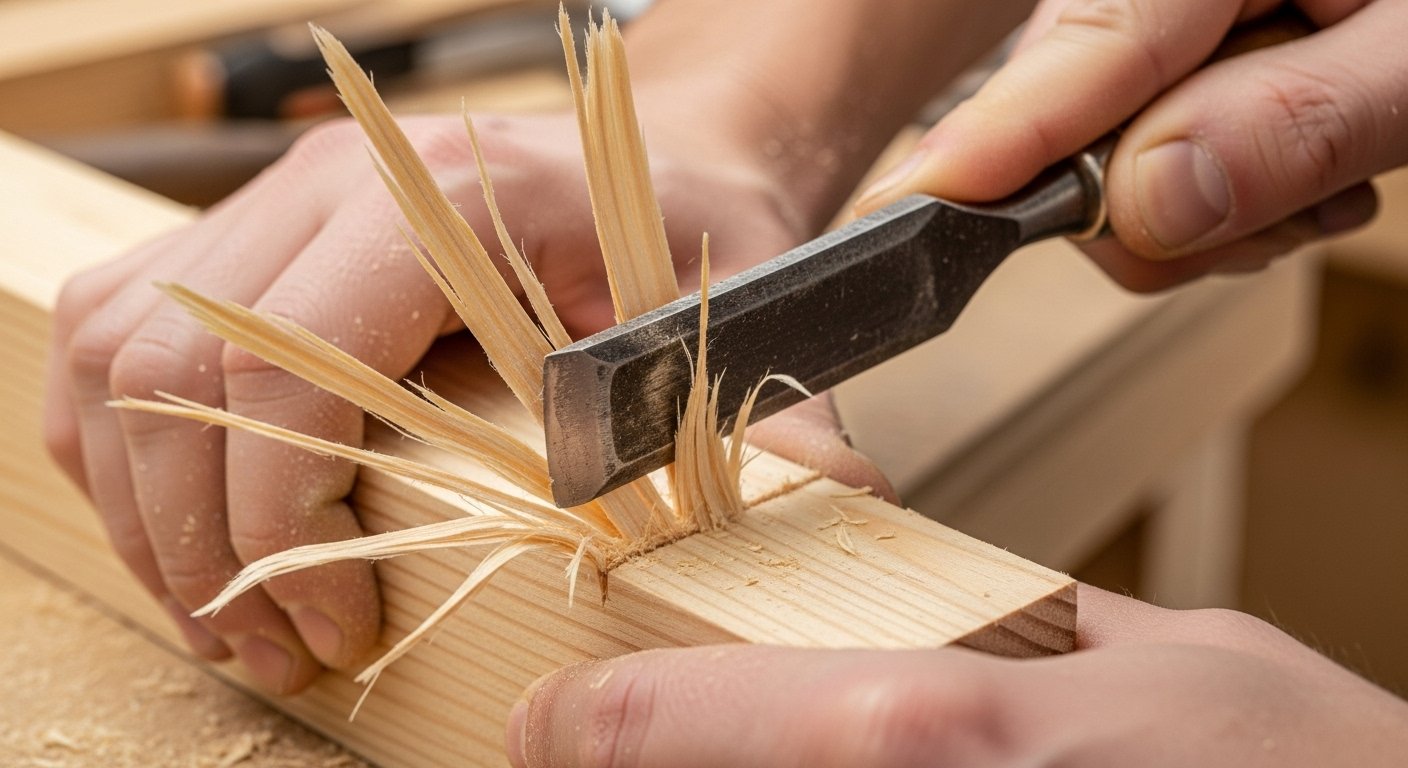
2. Using Dull Tools and Improper Tool Maintenance
Another significant pitfall for new woodworkers is trying to work with dull blades and bits. Many essential woodworking tools beginner mistakes stem from this oversight. A sharp tool cuts cleanly and efficiently, requiring less force. A dull tool, however, is not only frustrating to use but also incredibly dangerous. It requires excessive force, leading to slips, uncontrolled cuts, and potential injuries. Dull edges can also tear at the wood, resulting in poor quality work and common wood project mistakes like tearout.
This applies to everything from Chisels and Hand Planes to saw blades and router bits. Learning how to sharpen your tools is a fundamental skill. It will transform your woodworking experience, making tasks easier, safer, and yielding far superior results. Regular woodworking tool maintenance errors, such as neglecting to clean and sharpen, can significantly shorten the lifespan of your tools and lead to poor performance.
For practical guidance on keeping your power tools in top shape, check out our guide on power tool maintenance for longevity.
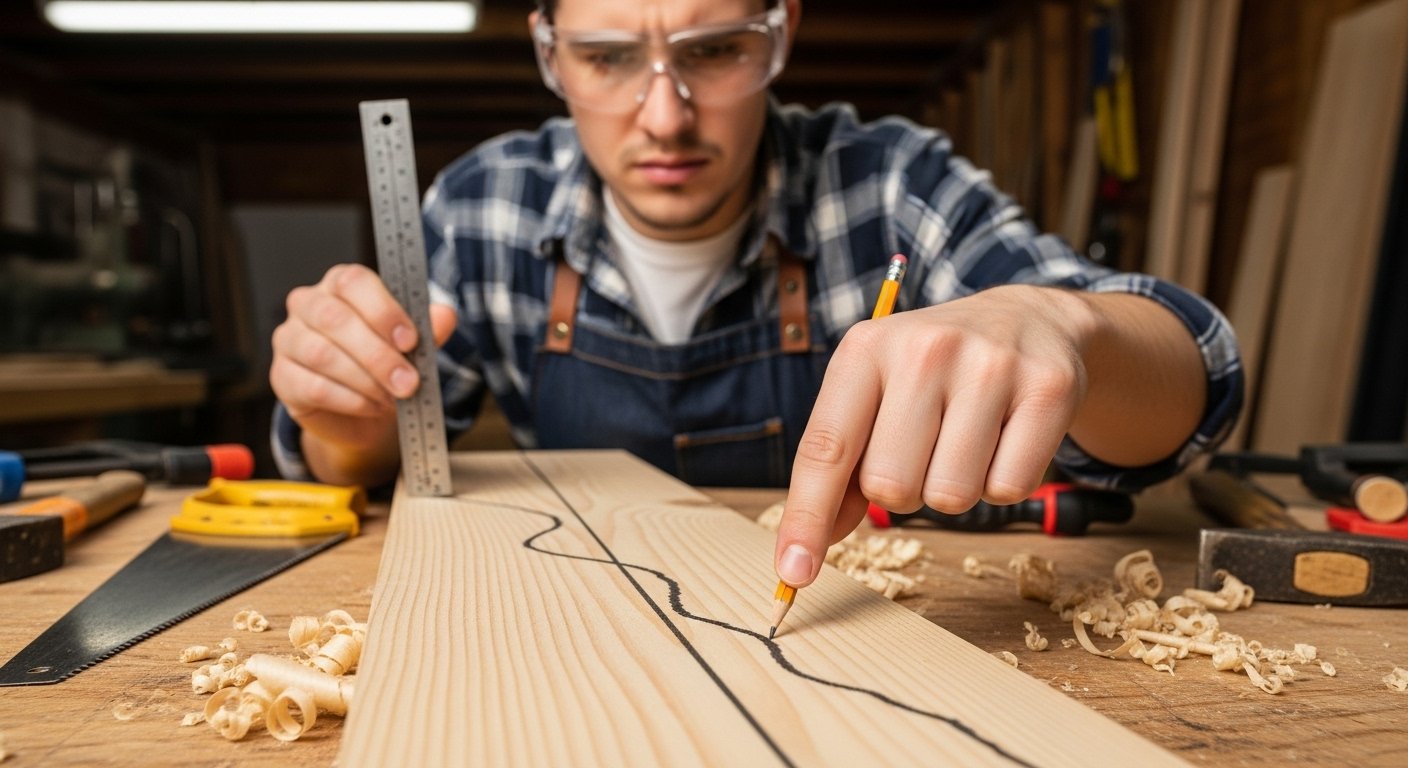
3. Skipping Accurate Measuring and Marking
The adage “measure twice, cut once” exists for a reason, and it’s particularly true in woodworking. A common beginner woodworking tool mistake is to rush or be imprecise with measuring and marking. Even a small error here can compound, leading to ill-fitting joints, crooked assemblies, and ultimately, wasted material. This is a classic example of common woodworking errors that can derail an entire project.
Invest in good quality Measuring and Marking Tools – a reliable tape measure, a sharp pencil, a marking knife, a combination square, and a try square are all crucial. Learn how to use them accurately and consistently. Always double-check your measurements before making any cuts. This simple step can save you countless headaches and prevent many first woodworking project errors.
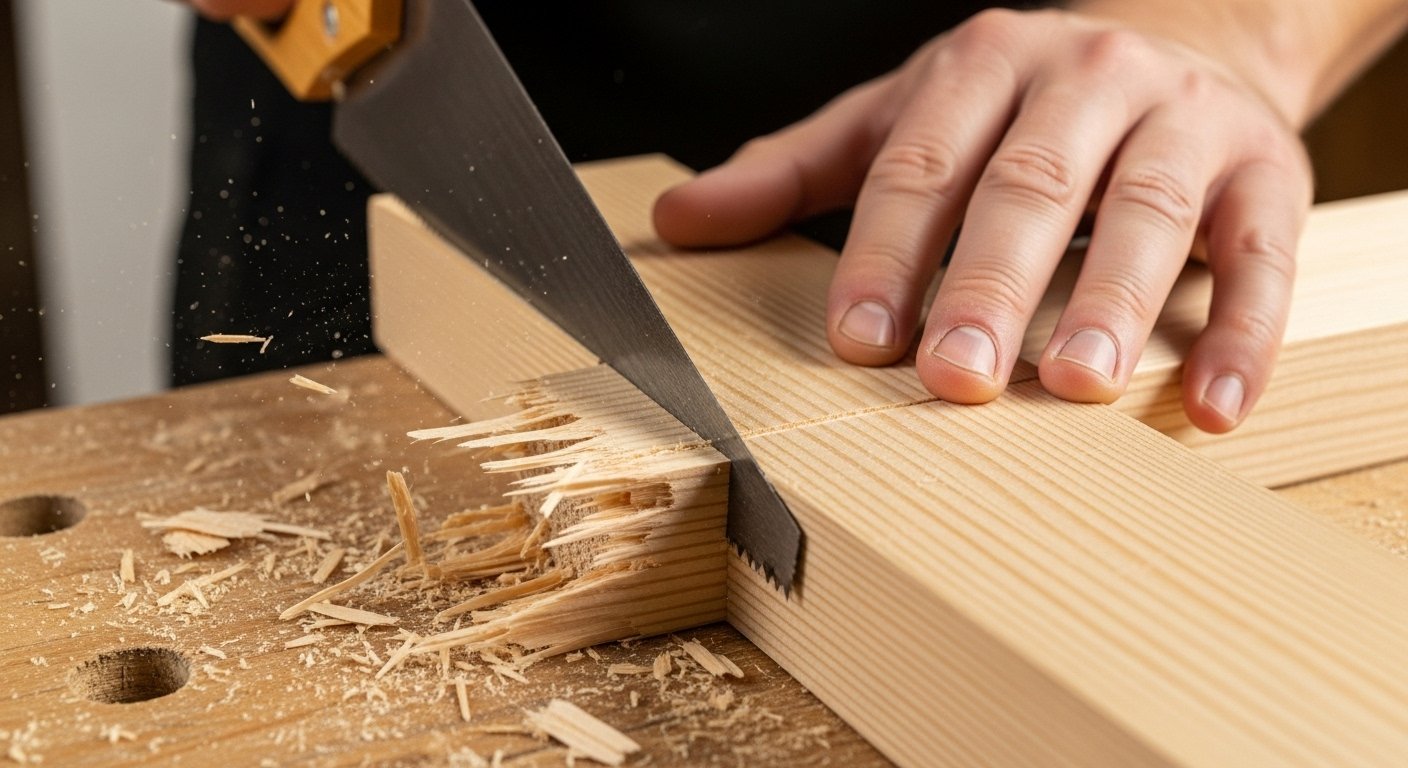
4. Ignoring Wood Grain and Improper Wood Selection
Understanding Wood Grain and Selection is paramount for successful woodworking. Ignoring the direction of the wood grain is a frequent beginner woodworking tool mistake that leads to tearout, splintering, and difficulty in achieving smooth cuts and finishes. Wood behaves differently depending on the orientation of its fibers. Cutting against the grain, for instance, often results in rough, torn edges, while cutting with it produces a clean, smooth surface.
Furthermore, new woodworkers often overlook the impact of wood movement. Wood is a hygroscopic material, meaning it absorbs and releases moisture, causing it to expand and contract. [1, 7] Different wood species exhibit distinct movement rates. [11] Neglecting this natural tendency can lead to warped panels, cracked joints, and other common woodworking problems and solutions are often rooted in understanding this fundamental property of wood. Choosing the wrong wood for a specific project – one that is too soft, too hard, or prone to excessive movement – is another common error. Take the time to learn about different wood species and their characteristics before you begin a project. [12]
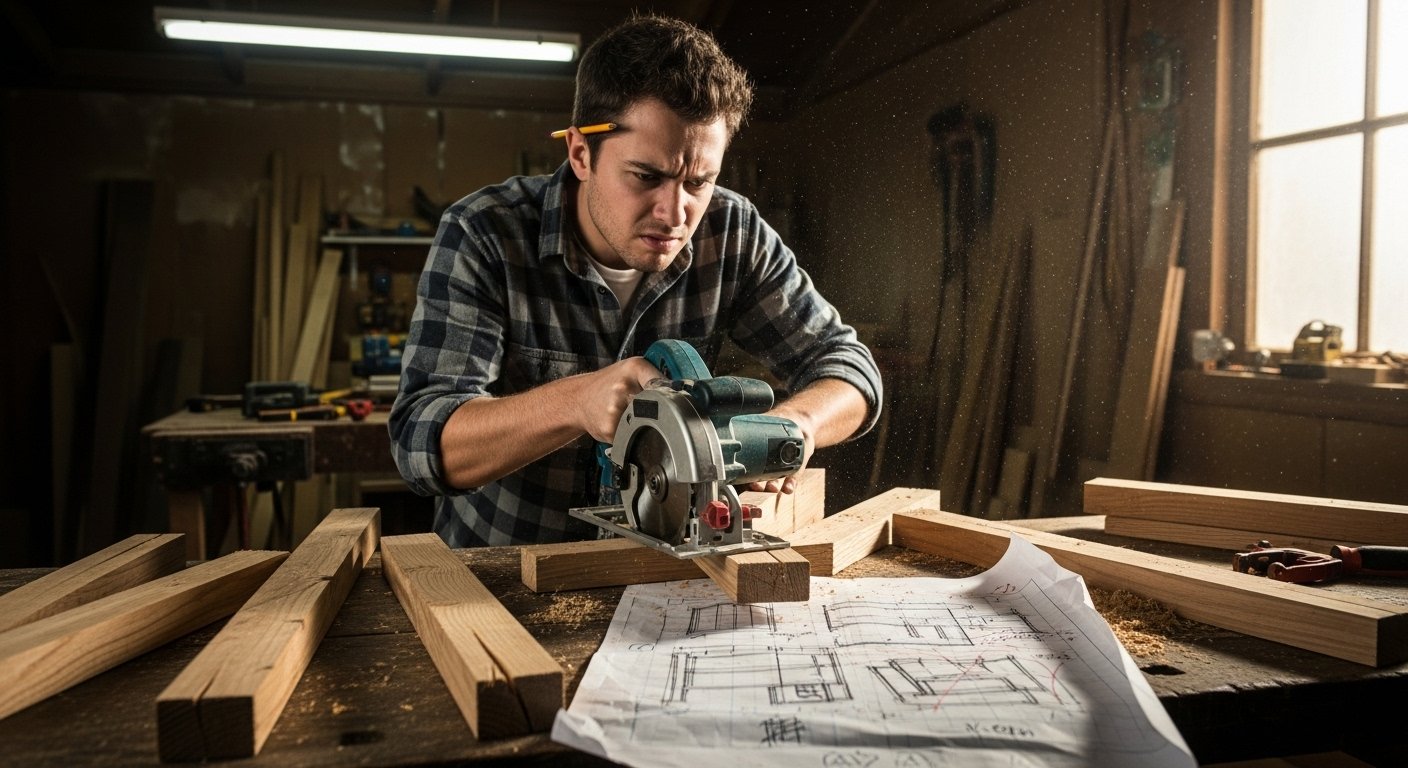
5. Rushing Projects and Lack of Planning
Patience is a virtue in woodworking, and rushing is a guaranteed path to frustration and mistakes. Many beginner woodworking tool mistakes stem from a desire to finish quickly, leading to skipped steps, hasty measurements, and poor craftsmanship. A lack of proper planning is a significant beginner woodworking workshop pitfall. Before you even touch a tool, take the time to design your project thoroughly. Sketch it out, create cut lists, and envision the entire construction process. What are the 10 most common woodworking mistakes beginners make? Rushing through the planning stage and not having a clear plan is high on that list.
Think through the order of operations, identify potential challenges, and consider how each piece will fit together. This upfront effort, often underestimated by new woodworkers, saves immense time and prevents costly errors down the line. Remember, every master woodworker started as a beginner, and they all learned that a well-planned project is a successful project. This also ties into beginner woodworking setup mistakes, where an unorganized and unplanned approach to your workspace can hinder efficiency and safety.

6. Buying the Wrong Tools (or Too Many Too Soon)
It’s easy to get caught up in the excitement of buying woodworking tools mistakes. The sheer variety of tools available can be overwhelming, and many beginners fall into the trap of purchasing expensive, specialized equipment they don’t yet need or know how to use. This is a common beginner woodworking tool mistake that can drain your budget and clutter your workshop.
What should a beginner woodworker not do when it comes to tools? Avoid the temptation to buy every shiny new tool you see. Start with a core set of essential beginner woodworking tools and gradually expand your collection as your skills and project needs evolve. Focus on quality over quantity. A few well-maintained, versatile tools will serve you far better than a workshop full of mediocre or unnecessary ones. Learning to master a few fundamental tools will build a stronger foundation for your woodworking journey.
To help you make smart choices, explore our guides on 10 essential woodworking tools for beginners and how to choose your first set of woodworking hand tools.
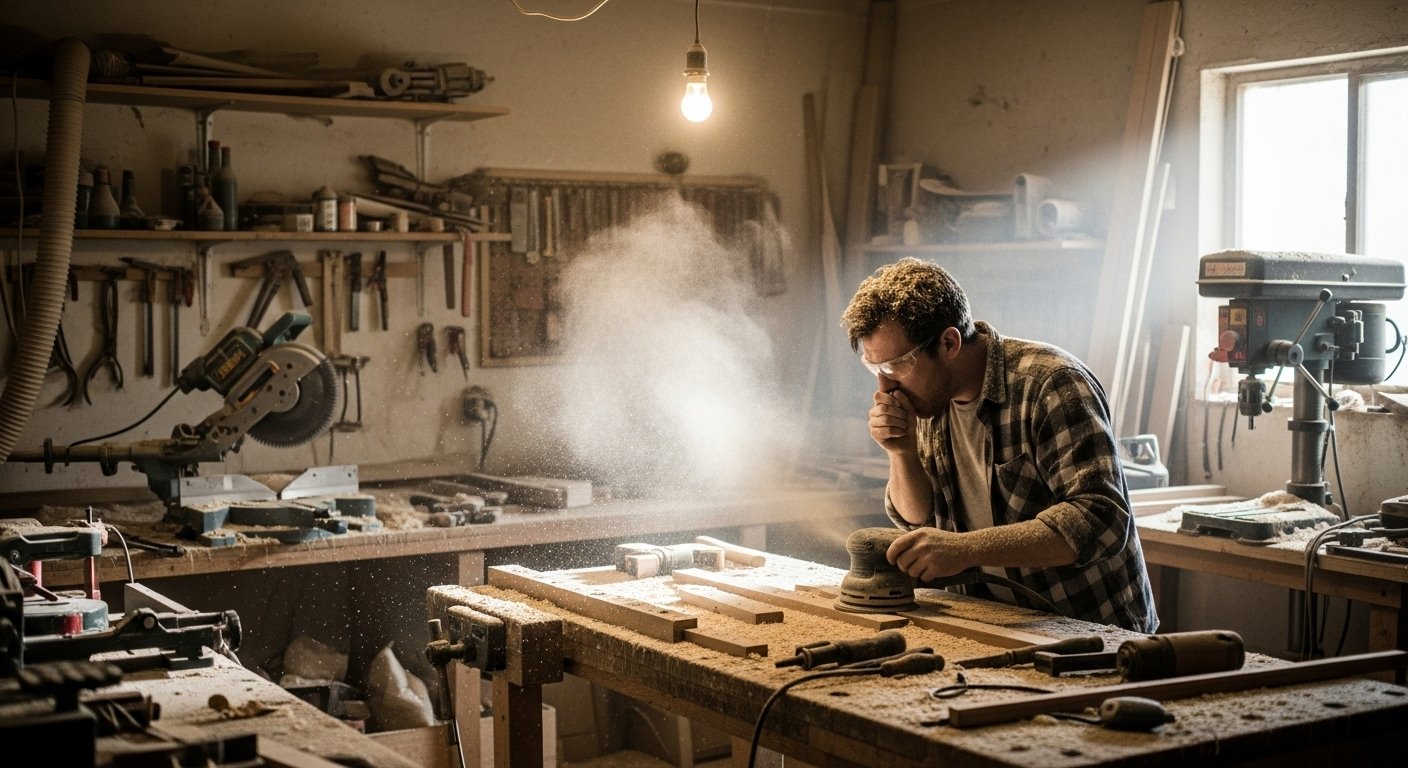
7. Neglecting Dust Collection and Workshop Environment
A clean and organized workshop isn’t just aesthetically pleasing; it’s a fundamental aspect of safety and efficiency. Neglecting Dust Collection Systems and general workshop cleanliness is a significant beginner woodworking tool mistake. Fine wood dust, generated by almost every woodworking operation, poses several hazards. As mentioned earlier, it’s a respiratory irritant and a carcinogen. [2, 17, 19] Beyond health concerns, excessive dust can obscure markings, clog tools, and even create a slip hazard on the floor. [3]
A clean environment also helps you focus, reduces the chances of misplacing tools, and minimizes the risk of fire, as wood dust is combustible. Ensure your workshop has adequate ventilation and a proper dust collection system, even if it’s a simple shop vacuum with a dust separator to start. Regularly clean up sawdust and debris, and keep your work surfaces clear. This proactive approach prevents many beginner woodworking workshop pitfalls and ensures a safer and more enjoyable creative space.
Conclusion: Mastering Your Woodworking Journey
As a new woodworker, avoiding these beginner woodworking tool mistakes will significantly improve your learning curve, the quality of your projects, and most importantly, your safety. Woodworking is a craft that rewards patience, precision, and a willingness to learn. Don’t be discouraged by initial challenges; instead, embrace them as opportunities to grow. By prioritizing safety, maintaining your tools, planning your projects diligently, and understanding your materials, you’ll develop the skills and confidence to tackle increasingly complex and rewarding woodworking endeavors. Happy woodworking!
Frequently Asked Questions
What are the most common mistakes beginning woodworkers make?
The most common mistakes include neglecting safety gear, using dull tools, inaccurate measuring, ignoring wood grain, rushing projects, buying unnecessary tools, and poor dust collection. These can lead to injuries, wasted materials, and poor project quality.
How can a beginner woodworker avoid mistakes?
Beginners can avoid mistakes by always prioritizing safety, taking the time to learn proper tool usage and maintenance, practicing accurate measuring and marking, understanding wood properties, planning projects thoroughly, investing in essential tools gradually, and maintaining a clean and organized workshop.
What are essential woodworking safety tips for beginners?
Essential safety tips include always wearing eye, hearing, and respiratory protection. Never wear loose clothing or jewelry around machinery. Use push sticks, guards, and always disconnect power when making adjustments. Understand the dangers of tools like the Table Saw, which accounts for many injuries. [13, 16]
What tools should a beginner woodworker avoid buying?
Beginners should avoid buying highly specialized, expensive power tools that are beyond their current skill level or project needs. Focus on acquiring a core set of versatile, essential hand and power tools first, and expand your collection as your skills develop and specific projects demand new tools.
How important is planning in woodworking projects?
Planning is extremely important in woodworking. Thorough planning, including sketching designs, creating cut lists, and visualizing the construction process, helps prevent errors, reduces wasted materials, saves time, and ensures a smoother and more successful project outcome. It’s a foundational step that should never be skipped.
